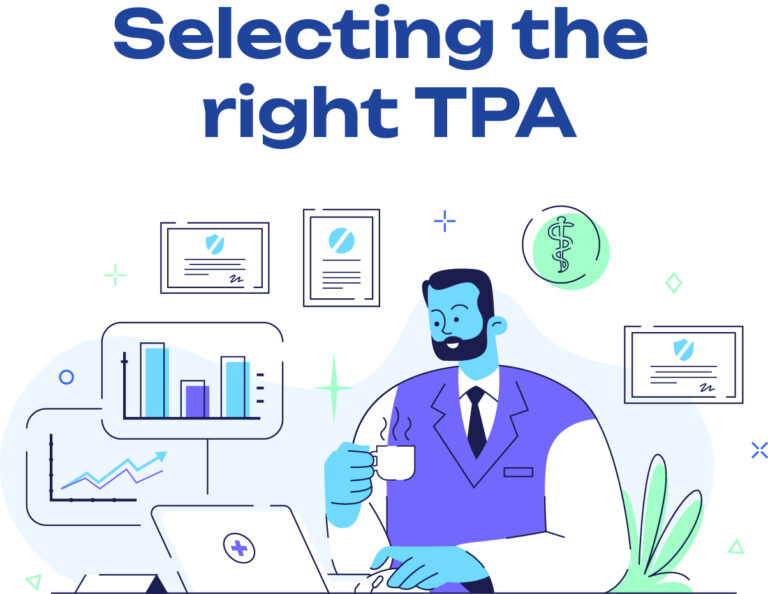Across the middle market, employers are facing one of the most complex benefits landscapes in over a decade. Health care costs are climbing, but the bigger story is what’s driving them—and how structural changes in the insurance industry are reshaping options for employers.
With confirmed plan cost increases ranging from 5.8% to 9.4% in 2025, the time to reassess your strategy isn’t next renewal — it’s now.
Key Cost Drivers in 2025 You Can’t Ignore
Here’s what’s fueling the spike in costs this year—and why each element matters for employer-sponsored health plans:
Prescription Drug Surges
-
- Biologics, GLP-1s (like Ozempic), and gene therapies are hitting plan budgets hard.
-
- Specialty medications are inflating at 2–3x the rate of general medical inflation.
-
- Narrower formularies and cost-sharing structures are becoming the norm.
Post-COVID Utilization Catch-Up
-
- Employees delayed care during the pandemic, and now that care is more complex—and expensive.
-
- Preventive gaps have evolved into higher-acuity treatments.
-
- This puts upward pressure on stop-loss coverage and renewal negotiations.
Carrier Consolidation (M&A Activity)
-
- Employers are seeing fewer carrier options, especially in rural and mid-sized markets.
-
- Less competition means less leverage during quoting—and fewer plan design choices.
- Bundled offerings can seem attractive but may limit flexibility and transparency.
What Carrier M&A Really Looks Like (and Why It Matters)
While health insurance M&A has always existed, 2025 has seen an accelerated push into the ancillary and small group space.
Noteworthy M&A Deals Affecting Employers
The Standard acquires Allstate’s Employer Voluntary Benefits
→ ~$2B acquisition expanding voluntary life, CI, hospital indemnity
→ Reduced standalone options for small-to-midsize employers
Amwins acquires Nelligan
→ Group ancillary, PFML, life & AD&D lines consolidated
→ Fewer small agencies offering “à la carte” service
Why it matters: These deals change the ecosystem of carriers, GA networks, and service teams. The result? Middle-market employers often see narrower choices, faster bundling, and less negotiation flexibility.
The Hidden Risks Behind Consolidation
Beyond premiums, these structural shifts create long-term vulnerabilities:
Reduced Market Competition
→ Fewer quotes = higher baseline rates, limited custom options
Disrupted Service Channels
→ Portal migrations, representative turnover, and claim processing issues post-M&A
Loss of Local Touch
→ National carriers absorbing regional specialists may overlook localized needs
Bundled Without Benefits
→ Not all bundled plans are cost-effective—some dilute value across the stack
What Employers Should Be Doing Now
A reactive approach to cost increases won’t work this year. Employers that adapt are asking better questions, leveraging smarter infrastructure, and staying ahead of the curve.
Here’s how:
Ask Smarter Questions During Renewal
-
- How many carriers were approached last year?
-
- Are carrier reps consolidating or leaving our region?
-
- What leverage do we really have in this market?
Audit Compliance and Administration Infrastructure
-
- Is our HRIS connected to our benefits system?
-
- Are COBRA notices and eligibility reviews happening on schedule?
-
- What’s our exposure if a vendor relationship shifts?
Scrutinize Bundled Offers
-
- Do bundled ancillary products save money—or just reduce choices?
-
- Can we split out components without losing service?
-
- Are there overlap risks in things like EAP, CI, or wellness perks?
Invest in Utilization Visibility
-
- If fully insured, request detailed claims reporting
-
- If self-funded, analyze plan performance by segment or department
- Use data to challenge or redesign plan architecture
Final Thought: Don’t Just Chase Price—Build Resilience
2025 isn’t just a year of increased costs—it’s a year of accelerated market consolidation, systemic risk, and administrative complexity. To protect your team and your bottom line, visibility is your most valuable asset.
At Atria, we don’t just manage renewals—we guide employers through the structural shifts that shape the future of benefits, risk, and compliance.






